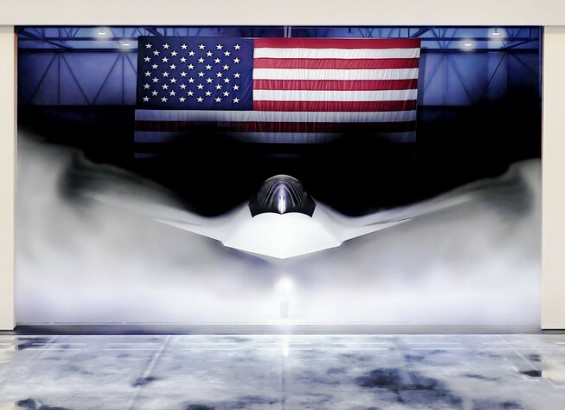The U.S. military is working on a new warplane, the F-47, which is part of the Next Generation Air Dominance (NGAD) program. This new aircraft is different from anything the world has seen before. It represents a new era in air combat and is more than just a fighter jet.
Next-Gen Fighter Gets Unique Stealth++ Tag
Recently, new details have come out about the F-47. One of the most important things people noticed is a new label attached to it—“Stealth++.” This term shows just how invisible the F-47 could be on enemy radar. Older fighters like the F-35 were known as “Stealth,” and the F-22 was called “Stealth+.” But now, the F-47 takes it even further. “Stealth++” means the F-47 may be the hardest jet to detect ever made.
This information came from a graphic shared by the U.S. Air Force. It showed three generations of fighter jets. The F-15 and F-16 were among the earliest models. The F-22 and F-35 were part of the intermediate generation. The F-47 and two drone aircraft types, the YFQ-42A and YFQ-44A, were displayed alongside the latest generation.
The F-47, a sixth-generation fighter, is presently being built. That means it uses the latest technology not just for speed or weapons, but also to work closely with drones and stay hidden from enemy sensors. It is being designed for missions where older jets might be spotted or blocked.
Boeing Stuns Defense World with $20 Billion F-47 NGAD Win, Lockheed Falls Hard
Combat Radius of Over 1,000 Miles Sets New Record
The fighting radius of the F-47 is another important element. This is the distance the aircraft can fly to a combat zone, engage in combat or drop munitions, and then fly back home without refueling. The combat radius of the F-47 is over 1,000 miles, or roughly 1,150 miles.
To understand how big this is, compare it to the F-22, one of the best jets in service today. The fighting radius of the F-22 is roughly 680 miles. That means the F 47 can go much farther into enemy territory before needing to turn back.
This long range will be important for missions in big areas, like across the Pacific Ocean. There are even ideas being discussed about a version of the F-47 with extra fuel tanks to fly even farther.
Despite all these new abilities, the Air Force plans to buy around 185 F-47 jets. That number might seem small, but the F-47 isn’t flying alone. It’s part of a team that includes drone wingmen. Each F-47 can control and work with unmanned aircraft during missions. So even one F-47 in the air could operate like a whole group of aircraft.
This means the 185 jets could actually act like 185 small squadrons, making the Air Force much stronger with fewer planes. The drones can do things like fly ahead to find targets, jam enemy signals, or carry weapons.
China’s Bold J-36 Test Sends Stealthy Warning to U.S. F-47 NGAD
New Design Comes From High-Tech Innovation Program
The F-47 was developed through a program that used new and experimental technology. The Defense Advanced Research Projects Agency (DARPA) is in charge of this project, which is known as the Aerospace Innovation Initiative. The goal of the program was to find better ways to build a next-generation fighter.
Many experts believed that it was not good for one company to build all the best jets. This program helped create competition and fresh ideas for future planes. However, work on the new jet slowed down due to budget limits. At one point, the entire project was paused for review.
With substantial money, the program eventually advanced once more. The Air Force has already set aside nearly $20 billion in this year’s budget just for the NGAD program. This amount shows how seriously the U.S. military is taking this new fighter.
The F-22 will eventually be replaced by the F-47. While it may look similar in some ways, it has more advanced features, better range, and the ability to work alongside smart drones. Its powerful engines, improved radar-avoiding shape, and ability to stay undetected are all signs of how much progress has been made.
The F-47 is not just another plane. With its Stealth++ rating, over 1,000-mile range, and team of flying partners, it marks a major step forward in air combat power. The world is just starting to learn what this aircraft can really do.
